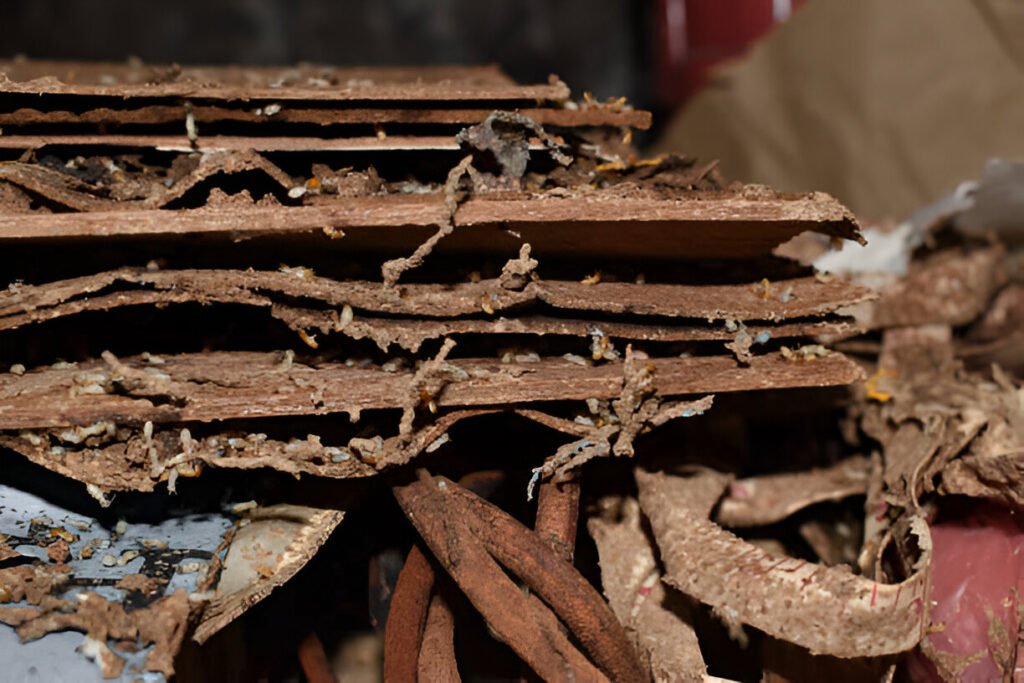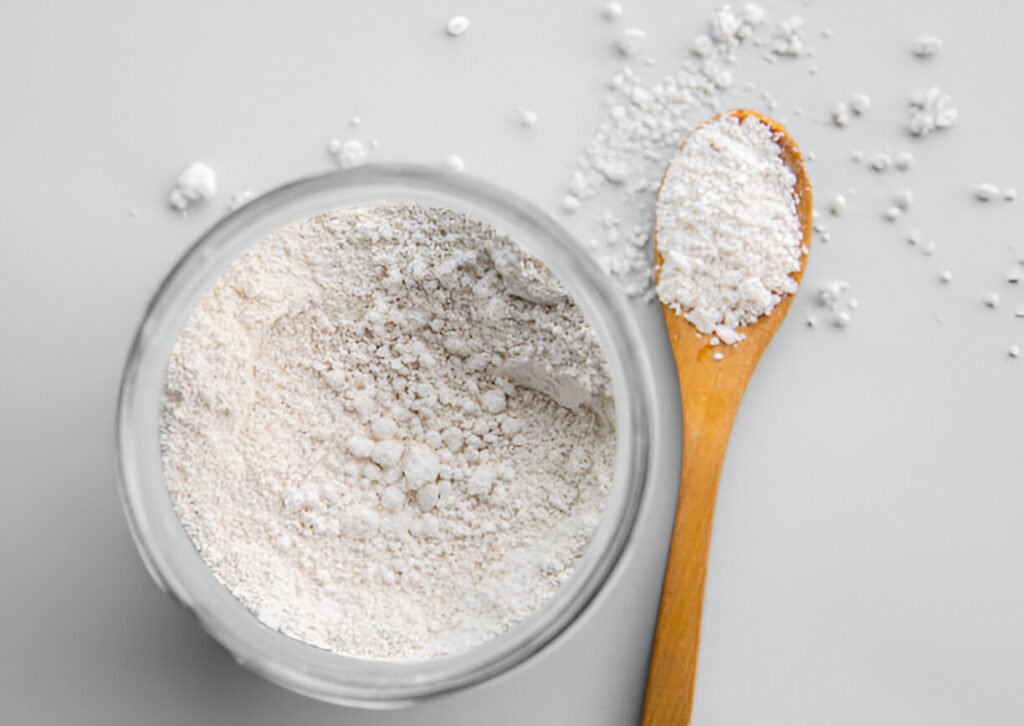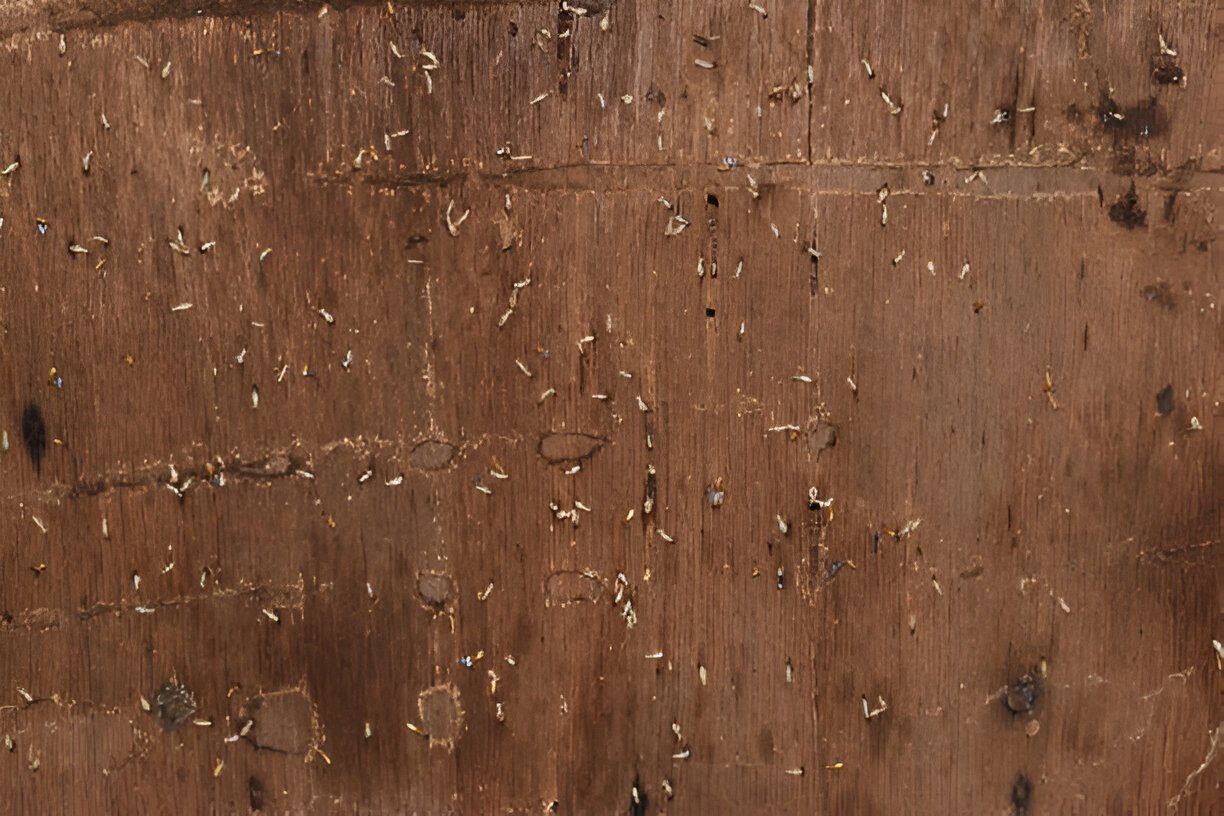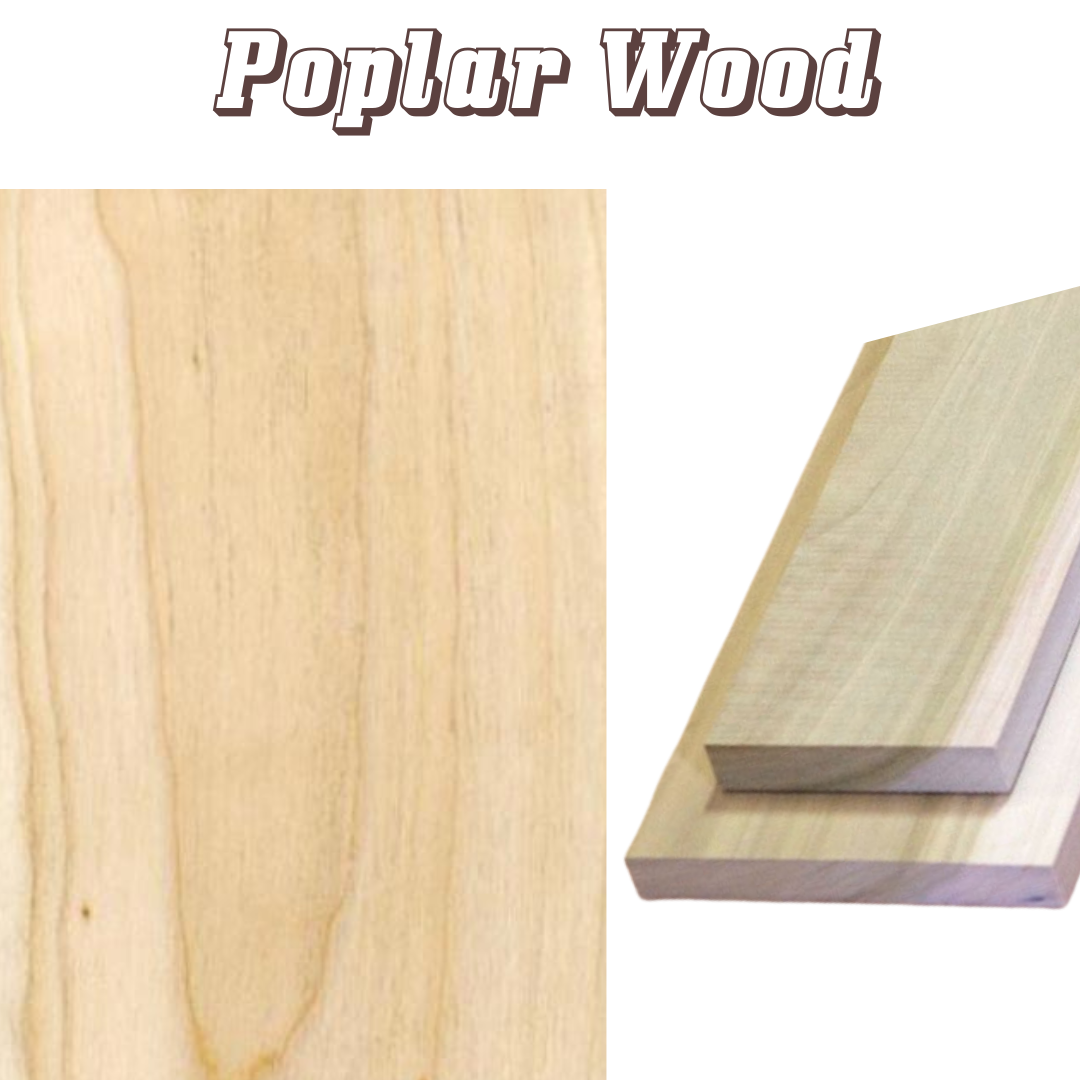Wood mites are very small bugs that you might not see but can be a big problem in homes and gardens. It’s important to know what they are, how to spot them, and how to get rid of them to keep your place clean and healthy. This article will help you learn what wood mites look like, where they live, and how to stop and control them.
What Are Wood Mites?
Wood mites are tiny creatures related to spiders and ticks. They live in damp, rotting wood and eat mold and other organic materials. Although they don’t usually harm people or pets, having them around can mean there are problems with moisture and decay in the wood.
Identifying Wood Mites
Appearance
Wood mites are tiny, white bugs that resemble fleas or ticks in appearance.
They are usually less than 1 mm in length and have a translucent, almost invisible body.
These mites are often difficult to spot individually and they tend to appear in large numbers.
Habitat
These mites thrive in damp, wooden environments like damp wood piles, behind moist tree bark, or in other moist areas of the home.
They feed on the cellulose in wood, causing small, tunnel-like holes in the surface.
Signs of Wood Mites: How to Identify an Infestation
Wood mites are tiny pests that can be hard to see because they are so small. However, certain signs can help you find them in your home or garden. Recognizing these signs early can help you stop a big infestation. Here are the key signs:
1. Tiny White or Brown Specks
They are very small, usually less than a millimeter long. They look like tiny white or brown dots on wood surfaces. You might need a magnifying glass to see them clearly.
2. Dust-Like Particles
One noticeable sign is fine, dust-like particles on wooden surfaces. This dust is often mite droppings and shed skin.
3. Slow Movement
Mites move slowly and often gather in clusters. If you see small, slow-moving specks on wood, they might be wood mites.
4. Damage to Wood
While they don’t cause major damage to wood, their presence can indicate wood decay or mold. If you see decaying or moldy wood, it may be worth checking for mites.
5. Presence of Mold
Wood mites eat mold and other organic matter in damp, decaying wood. If you find mold on wood surfaces, there is a higher chance of having wood mites.
6. Increased Humidity and Moisture
They thrive in humid environments. If you notice increased humidity or moisture in your home, especially around wooden structures, it may attract wood mites.
7. Allergic Reactions
Some people might have allergic reactions to wood mites. Symptoms can include itching, redness, and respiratory issues similar to those caused by dust mites.
8. Clutter and Wood Debris
Wood mites are more likely to be found in cluttered areas with lots of wood debris, like piles of firewood or wood shavings.
How to Get Rid of Wood Mites: Effective Strategies for a Mite-Free Home
Here’s a step-by-step guide to help you identify, prevent, and get rid of wood mites from your home.

Step 1: Identify Wood Mites
Before you can get rid of wood mites, you need to confirm they are present. Look for:
- Tiny White or Brown Specks: These are the mites.
- Dust-Like Particles: Fine dust on wood surfaces could mean mites are there.
- Slow Movement: These mites move slowly and often in clusters.
Step 2: Eliminate Moisture Sources
Wood mites thrive in moist environments. Reduce moisture levels in your home to make it less inviting for them:
- Fix Leaks: Repair any leaking pipes, roofs, or windows.
- Improve Ventilation: Use exhaust fans in bathrooms and kitchens, and ensure proper ventilation in attics and basements.
- Use Dehumidifiers: Place dehumidifiers in damp areas to reduce humidity levels.
Step 3: Clean Infested Areas
Thorough cleaning can help remove mites and their food sources:
- Vacuum Thoroughly: Use a vacuum cleaner to remove mites from carpets, rugs, and furniture. Pay special attention to cracks and crevices.
- Wash Affected Areas: Clean infested wood surfaces with a mixture of soap and water. You can also use a mild bleach solution (1 part bleach to 9 parts water) for added effectiveness.
Step 4: Use Pesticides
In severe infestations, pesticides can be effective:
- Mite-Specific Pesticides: Choose pesticides specifically designed for mites. Follow the manufacturer’s instructions carefully.
- Professional Pest Control: For extensive infestations, consider hiring a professional pest control service.
Step 5: Apply Natural Remedies
Natural remedies can also help repel wood mites:
- Essential Oils: Tea tree oil, neem oil, and eucalyptus oil can repel mites. Mix a few drops with water and spray on affected areas.
- Diatomaceous Earth: Sprinkle food-grade diatomaceous earth on infested areas. It’s a natural powder that can kill mites by dehydrating them.
Step 6: Prevent Future Infestations
Preventing future infestations is key to long-term control:
- Regular Inspections: Check wooden furniture, flooring, and other structures regularly for signs of moisture and decay.
- Proper Storage: Store firewood and other wooden materials off the ground and away from your home.
- Seal Cracks and Gaps: Seal any cracks and gaps in walls, floors, and windows to prevent mites from entering your home.
Natural Remedies for Eliminating Wood Mites
While chemical insecticides can kill wood mites, there are natural remedies you can try first:
Apple Cider Vinegar and Borax
Ingredients: 1/2 cup of apple cider vinegar, 1/2 cup of borax, 1/2 cup of hot water.
Instructions: Mix these ingredients in a spray bottle. Spray the solution directly onto affected areas every 2-3 days until no mites are visible for at least a week. The vinegar’s acidity and borax’s insecticidal properties will work together to kill the mites.
Essential Oils
Ingredients: 1 teaspoon each of tea tree oil, peppermint oil, and eucalyptus oil, 1 cup of water.
Instructions: Mix the oils with water in a spray bottle. Apply the mixture to damp wood or areas where wood mites are present. The strong scents of these oils will drive the mites away.
Diatomaceous Earth

Instructions: Lightly sprinkle diatomaceous earth around plants, cracks, and other suspected mite habitats. This fine powder, made from crushed fossils, acts as a desiccant, causing mites to dry out and die.
Boric Acid
Instructions: Carefully apply boric acid powder to areas where you’ve spotted the mites, focusing on their food sources like damp wood. Boric acid is a natural insecticide that can kill wood mites.
Using these natural, eco-friendly methods can help you eliminate wood mites from your home without harsh chemicals. Be patient and thorough in your approach for the best results.
Also read: How to fill Cracks in Wood




